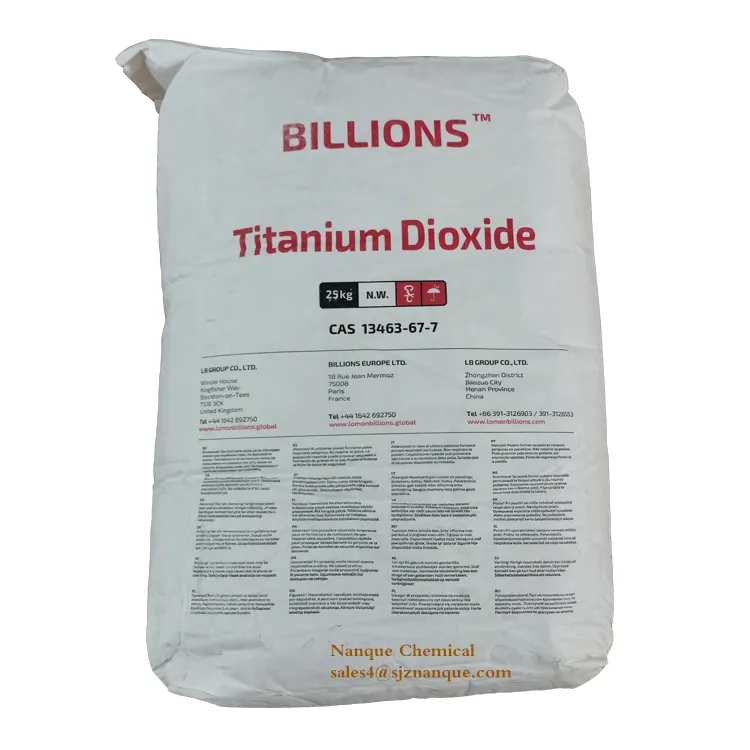
dec . 22, 2024 13:29 Back to list
anatase titanium dioxide food grade
Anatase Titanium Dioxide A Food Grade Perspective
Anatase titanium dioxide (TiO2) has gained considerable attention in recent years for its application in various industries, including food production. Its unique properties, such as high refractive index, UV protection, and non-toxicity, make it a notable choice for food-grade applications. This article explores the characteristics of anatase titanium dioxide, its regulatory status, health implications, and its role in the food industry.
Understanding Anatase Titanium Dioxide
Titanium dioxide exists in three primary crystallographic forms rutile, anatase, and brookite. Among these, anatase is particularly valued for its superior photocatalytic properties and higher surface area, which can be advantageous in various applications. In the food industry, anatase titanium dioxide is utilized mainly as a colorant (with E171 as its European food additive code) and as an anti-caking agent.
Regulatory Overview
The safety and regulation of titanium dioxide in food have been scrutinized extensively. Regulatory bodies like the Food and Drug Administration (FDA) in the United States and the European Food Safety Authority (EFSA) have reviewed its use. In the U.S., titanium dioxide is classified as generally recognized as safe (GRAS), allowing for its use in food products, provided it meets certain purity standards. However, in 2021, the EFSA concluded that titanium dioxide can no longer be considered safe as a food additive, primarily due to concerns about potential genotoxicity.
Despite the contrasting evaluations, the discussions surrounding its safety have prompted many manufacturers and consumers to reevaluate the use of titanium dioxide in food products. While it is essential to rely on science and regulatory guidance, it is equally important for consumers to be informed about the additives present in their food.
Health Implications
The health implications of consuming products containing anatase titanium dioxide have become a focal point for researchers. Laboratory studies have suggested that nanoparticles of titanium dioxide can accumulate in the body and potentially lead to adverse health effects. Consequently, there is concern that the long-term consumption of products containing this additive might pose health risks, particularly when considering the accumulation of nanomaterials in bodily tissues.
anatase titanium dioxide food grade

However, it's worth noting that extensive research is ongoing, and conclusions about the health effects and safety of anatase titanium dioxide remain nuanced. As new studies emerge, they will inevitably contribute to the ongoing dialogue regarding optimal safety levels and acceptable usage in food products.
Role in the Food Industry
Anatase titanium dioxide primarily serves as a whitening agent, imparting a bright white color to food products. This property is especially beneficial in processed foods like confectionery, sauces, and dairy products, where a uniform, appealing appearance is crucial for commercial success. Additionally, it functions as an anti-caking agent for powdered foods, enhancing the texture and preventing clumping during storage and processing.
Yet, as consumers become more aware of food additives, the demand for transparent labeling practices has significantly increased. Many food manufacturers are reevaluating their ingredient lists, leading to a shift toward using natural alternatives rather than synthetic additives such as titanium dioxide. This shift not only addresses consumer demands for clean label products but also aligns with the broader trend of sustainability in food production.
Conclusion
Anatase titanium dioxide is a fascinating additive with both beneficial properties and significant scrutiny regarding its safety in food applications. While it has served as an important component in various food products, recent regulatory perspectives and research findings underscore the necessity for balanced consideration of its use.
As consumer awareness of food ingredients continues to grow, manufacturers must prioritize transparency and safety in their products. Ongoing research will play a crucial role in determining the future of anatase titanium dioxide in the food industry, as stakeholders aim to reconcile the benefits it offers with the potential health risks associated with its consumption.
Ultimately, the focus on food safety and health will encourage the exploration of alternative, sustainable ingredients that can meet consumer expectations while upholding industry standards. Being informed and mindful of what we consume remains critical for health-conscious individuals navigating an increasingly complex food landscape.
-
China Lithopone in China Supplier – High Quality Lithopone ZnS 30% Powder for Wholesale
NewsJun.10,2025
-
Top China Titanium Dioxide Company – Premium TiO2 Powder Supplier & Manufacturer
NewsJun.10,2025
-
Fast Shipping 99% Pure TiO2 Powder CAS 13463-67-7 Bulk Wholesale
NewsJun.10,2025
-
Top China Titanium Dioxide Manufacturers High-Purity R996 & Anatase
NewsJun.10,2025
-
Lithopone MSDS Factories - Production & Quotes
NewsJun.10,2025
-
High-Quality Titanium Dioxide in Water Suppliers - China Expertise 60
NewsJun.09,2025
